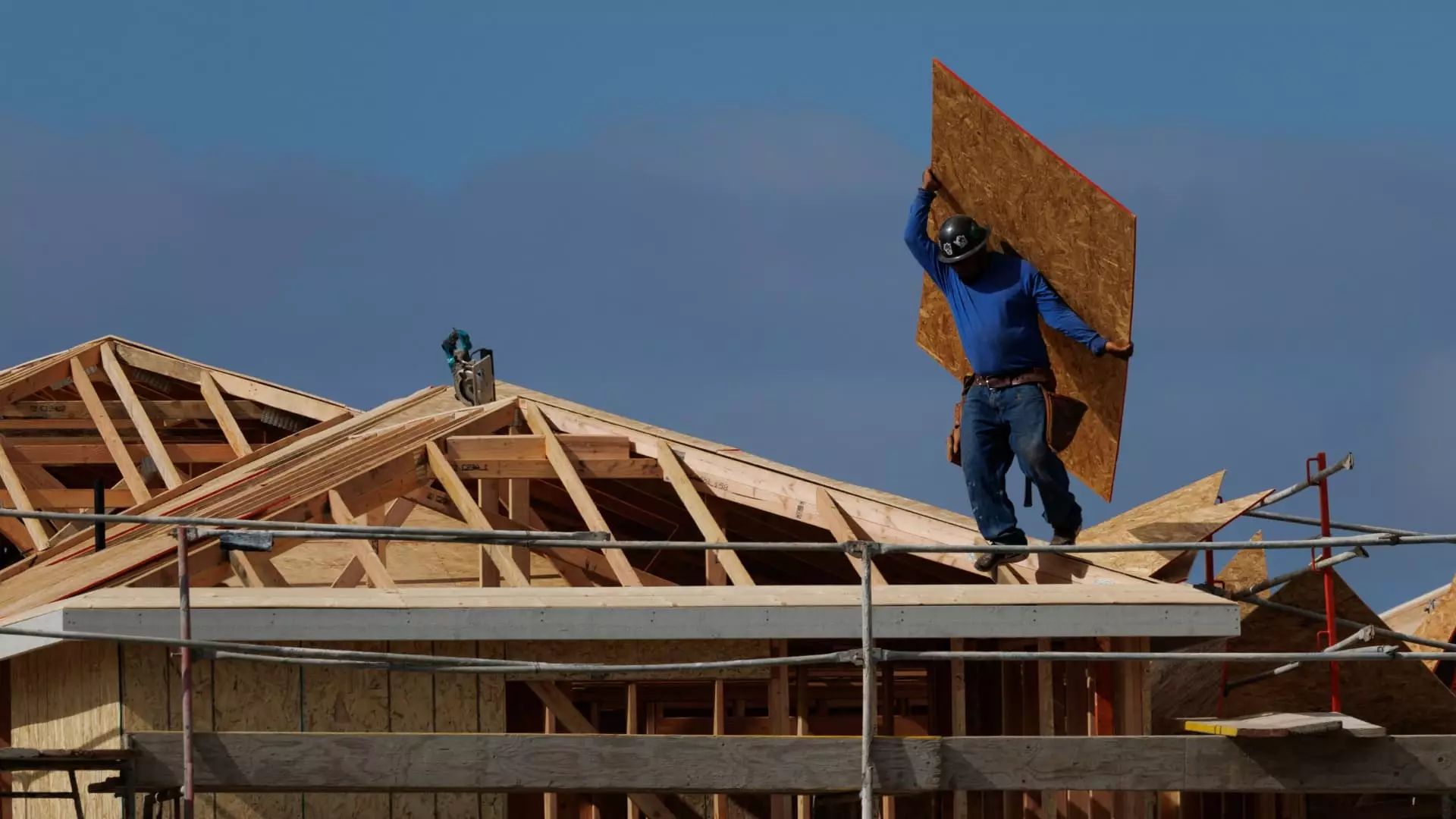The nation’s housing sector is teetering on the brink of a crisis, exposing cracks in what once seemed a resilient economic pillar. Despite a marginal uptick in builder confidence in July, the overall sentiment remains deeply negative, with the NAHB index languishing below the neutral threshold of 50 for an unprecedented fifteen consecutive months. This persistent downturn signals a fundamental loss of faith in the housing market’s near-term prospects. Builder optimism, which fluctuates with economic tides, is now anchored in doubt, primarily driven by the troubling outlook on affordability and stagnant demand. The recent slight increase—just one point—can hardly mask the underlying anxiety permeating the industry.
Price Cuts and Eroding Margins: A Sign of Desperation
The alarming trend of price reductions by builders underscores a desperate attempt to stave off collapse. Nearly 40% of builders have resorted to slashing prices in July, marking the highest rate in three years. The average reduction of 5% not only shrinks profit margins but also signals a recognition that the market cannot absorb higher prices under current economic conditions. Builders have been intervening by buying down mortgage rates in a bid to entice buyers, but this tactic is merely a band-aid solution, further eating into profits without guaranteeing sustained demand. The trade-off exemplifies a fragile balancing act—reduce prices enough to generate sales but not so much as to threaten long-term viability.
The Reality of Affordability and Rising Mortgage Rates
A core issue muddying the waters is the persistent rise in mortgage rates, which have hovered at elevated levels for months. These rates have sapped housing affordability, effectively locking out a significant portion of potential buyers. Despite legislative efforts, including recent tax relief measures designed to invigorate the economy, the impact has been muted. The reality is that interest rates have a more profound influence on housing sales than modest fiscal stimuli. Builders are caught in a catch-22: to attract buyers, they must cut prices or buy down mortgage rates, but this financially burdens them and threatens profit margins. The ongoing struggle to improve affordability highlights a broader economic malaise, one that cannot be simply mitigated by short-term policy tweaks.
Market Dynamics: A Dwindling Buyer Pool
The market’s declining buyer traffic underscores a fundamental shift in consumer behavior. With buyer traffic at its lowest point since late 2022, the chances for a quick rebound look slim. Existing home sales conditions have modestly improved but remain subdued, and sales expectations extend this cautious outlook into the next six months. Regionally, sentiment varies, with the Northeast faring slightly better than the South and West, where positivity has waned further. The decline in real buyer traffic is a red flag; it suggests that potential homeowners remain skeptical about future affordability, job stability, and overall economic prospects. This longstanding hesitation could cast a long shadow over the housing market’s recovery prospects.
A Structural Concern for the Future
Forecasts for 2025 are growing increasingly pessimistic as single-family housing starts are projected to decline further. The persistent affordability crisis, fueled by elevated mortgage rates and pricing pressures, restricts demand and stifles new construction. Permits are down significantly, and builder confidence continues to falter, painting a bleak picture for the sector’s short-term future. This isn’t just a cyclical downturn—it is a structural issue rooted in economic fundamentals that must be addressed if the housing market is to turn a corner. Without meaningful intervention that reduces borrowing costs or stabilizes home prices, this downward spiral could impact broader economic stability.
The Political and Economic Challenge Ahead
In this climate, policymakers face a daunting challenge. While some relief measures have been implemented, they are insufficient to counteract the underlying issues of affordability and stagnant demand. The housing sector, a critical component of economic health, needs proactive, comprehensive strategies that go beyond temporary fixes. Without such measures, the risk is that this crisis of confidence may deepen, leading to a prolonged malaise that hampers economic growth and social stability. The current landscape demands bold, innovative solutions: investment in affordable housing, targeted mortgage rate reductions, and policies that foster sustainable demand. Anything short of this could result in a long-lasting recession within the housing market, with ripple effects across communities and the broader economy.

